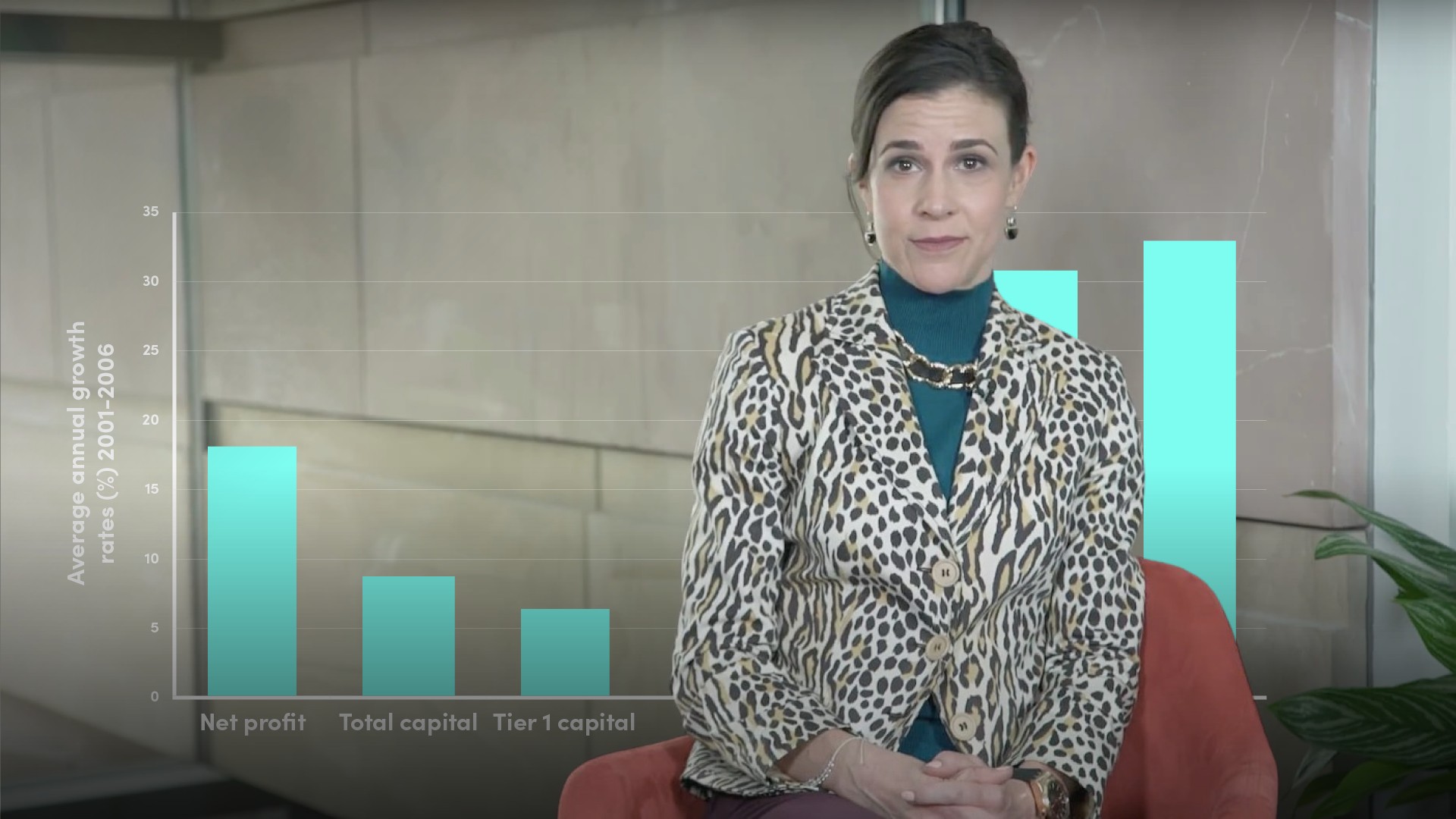
What is the Liquidity Coverage Ratio?

January Carmalt
20 years: Research & banking
In this video January breaks down the Liquidity Coverage Ratio and explains its importance with a Northern Rock case study.
In this video January breaks down the Liquidity Coverage Ratio and explains its importance with a Northern Rock case study.
Subscribe to watch
Access this and all of the content on our platform by signing up for a 7-day free trial.

What is the Liquidity Coverage Ratio?
18 mins 11 secs
Key learning objectives:
Discuss the different types of HQLA and the conditions in which they are traded
Explain the potential drawbacks of having a surplus of liquidity
Understanding the importance of Deposit Insurance Schemes, such as the FSCS in protecting deposits
Overview:
Many banks tend to fund long-term lending commitments with short-term debt, hence creating a shortage of liquidity. The Liquidity Coverage Ratio was introduced to ensure banks have sufficient highly liquid assets to meet their short-term financial obligations.
Subscribe to watch
Access this and all of the content on our platform by signing up for a 7-day free trial.
What is Liquidity?
Liquidity is the ability and ease by which we can convert assets into cash. Typically, highly liquid assets would include money market funds, demand deposits, government notes and bonds. Whereas, illiquid assets include term deposits, property and other luxury goods lacking a public exchange.
What is the Liquidity Coverage Ratio?
The Liquidity Coverage ratio is expressed as the ratio of high-quality liquid assets to total net cash flows. Under Basel III, it applies to banks with over US $250bn in consolidated assets. Its main purpose is to ensure a bank has an adequate stock of HQLA that can be converted into cash in order to meet 100% of its liquidity needs under a 30-day stress scenario.
What are the HQLA sub-categories?
- Level 1A – Coins, banknotes, US Treasuries and T-bills, central bank reserves, claims on sovereigns, Public sector entities, claims on the bank for International Settlements, the International Monetary Fund, the European Central Bank and other multilateral development banks assigned a 0% risk weighting under Basel II standardised risk approach
- Level 2A - Central Bank reserves, claims on sovereigns, public sector entities, supranational entities or other development banks which are assigned 20% risk weighting. It also includes Corporate debt and Covered bonds that must be rated by an external rating agency as AA- or higher. Additionally, Level 2A assets are subject to an obligatory 15% haircut
- Level 2B – Residential mortgage-backed securities rated no longer than AA by an external rating agency and are subject to 25% haircut. Also, certain corporate debt and exchange traded common equity shares rated no longer than BBB- and subject to a 50% reduction
Under what conditions do they trade?
All assets listed above must be traded in large, deep and active repo or cash markets. They must have a proven record as a reliable source of liquidity in the markets. Further to this, it must not be an obligation of a financial institution or any of its affiliated entities. Level 1 assets may comprise up to 100% of a bank’s HQLA. Also, Level 2 assets may comprise no more than up to 40% of a bank’s reported HQLA after requisite regulatory haircuts.
What assumptions are made when measuring cash outflows?
- The run-off of a proportion of retail deposits
- A partial loss of unsecured wholesale funding capacity
- A partial loss of secured, short-term financing with certain collateral and counterparties
- Additional contractual outflows that would arise from a downgrade in the bank’s public credit rating by up to and including three notches, including collateral posting requirements
- Unscheduled draws on committed, but unused credit and liquidity facilities that the bank has provided to its clients
- The potential need for the bank to buy back debt or honour non-contractual obligations in the interest of mitigating reputational risk
Assigned run-off rates are determined by which factors?
- Whether the deposits are demand or term deposits
- If they are covered by a certified and funded deposit insurance scheme
- Past depositor behaviour
- Customer relationships with said bank
What determines a ‘Stable or ‘Less Stable’ deposit?
Those considered ‘stable’ deposits are assigned a 3-5% run-off rate or higher. These are largely limited to retail deposits which include accounts held by individuals rather than LLP’s, or other business organisations. Furthermore, they must be fully insured by a certified deposit insurance scheme. Also, whether or not the customer has an established relationship with said bank. It must also be a transactional account whereby the customer has established direct deposits.
A ‘less stable’ deposit would include wholesale demand deposits, deposits not covered by an insurance scheme. These generally have a run-off rate of 10% or higher, and they include Operational deposits which receive a run-off rate of 25% or higher.
What are the Cons of holding ‘too much’ liquidity?
Bank’s drive basic economic activity when they take on deposits and lend them to other customers in the form of mortgages. From this, they earn interest and profit. Hence the emphasis on bank’s maintaining an adequate level of liquid assets could lead to institutions hoarding more cash than necessary. Similarly, it could curtail investment and spending, ultimately at the expense of potential economic growth and prosperity.
What is the importance of Deposit Insurance Schemes?
Financial Services Compensation Scheme in the UK and the Federal Deposit Insurance Scheme in the US are managed by government-sponsored entities that fund and compensate depositors when a financial institution has collapsed.
The FSCS restored customer confidence and trust in banks after the collapse of Northern Rock by increasing the insured amount an individual depositor can claim. At the time of the collapse, only £31,700 was protected. However, today the FSCS protects up to £85,000 per depositor, per institution. Additionally, it protects £170,000 per joint account per institution.
They also insure certain investments made by firms regulated by the PRA and FCA including:
- Mortgage advice and arranging
- General claims made but not yet paid by failed insurance companies
- General insurance advice and arranging
Subscribe to watch
Access this and all of the content on our platform by signing up for a 7-day free trial.

January Carmalt
There are no available Videos from "January Carmalt"



























